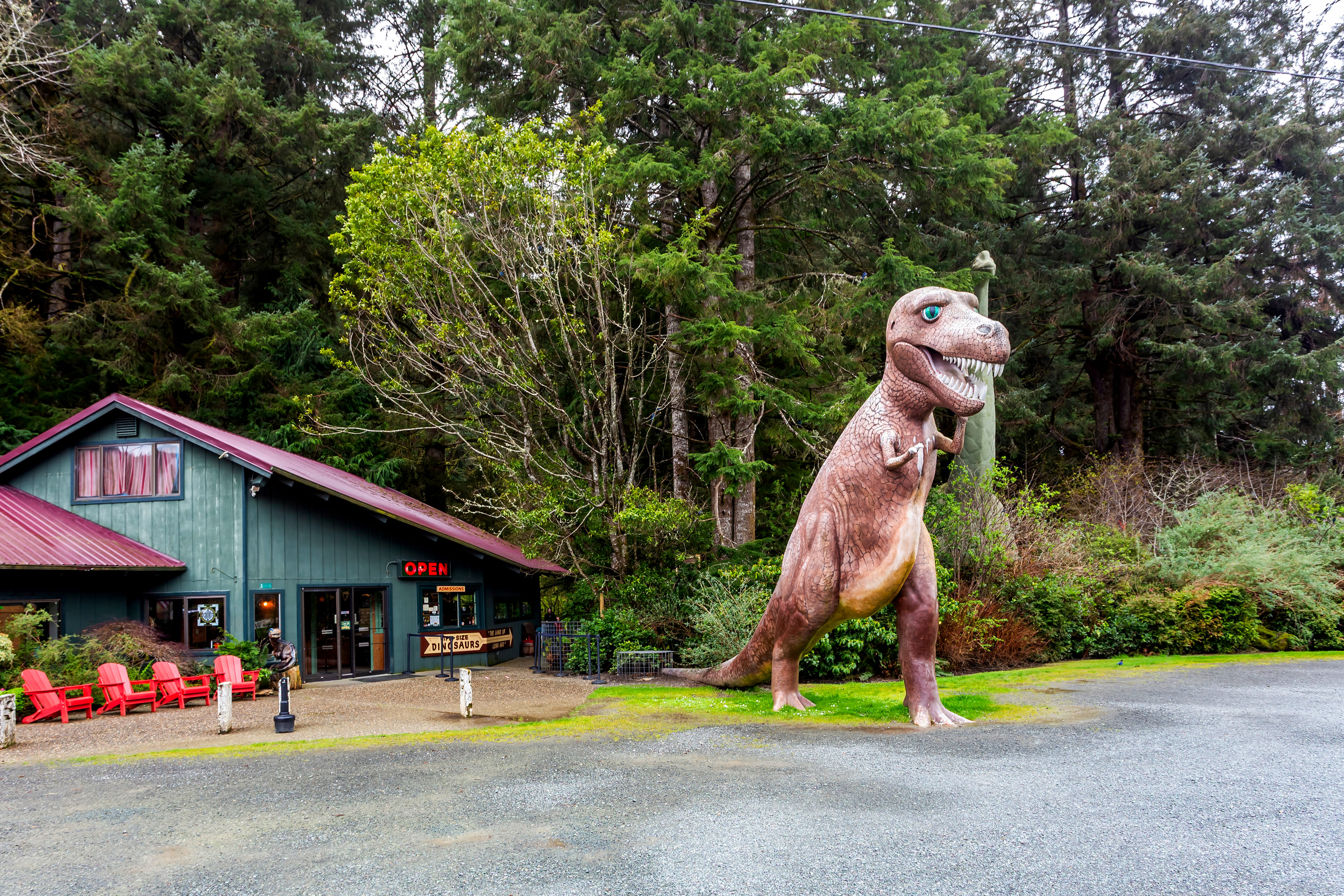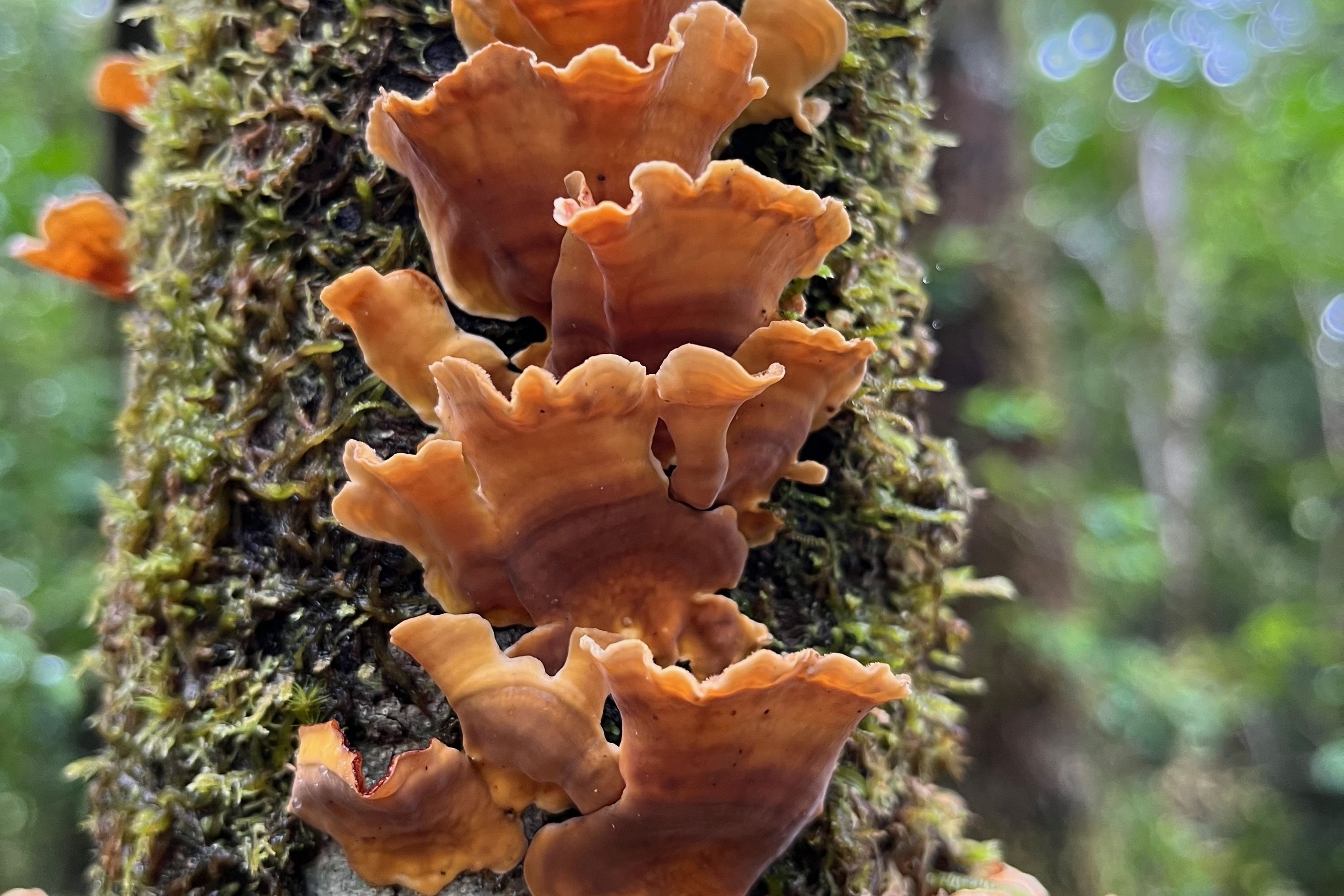Here’s What You Need to Know about Outdoor Recreation during COVID-19
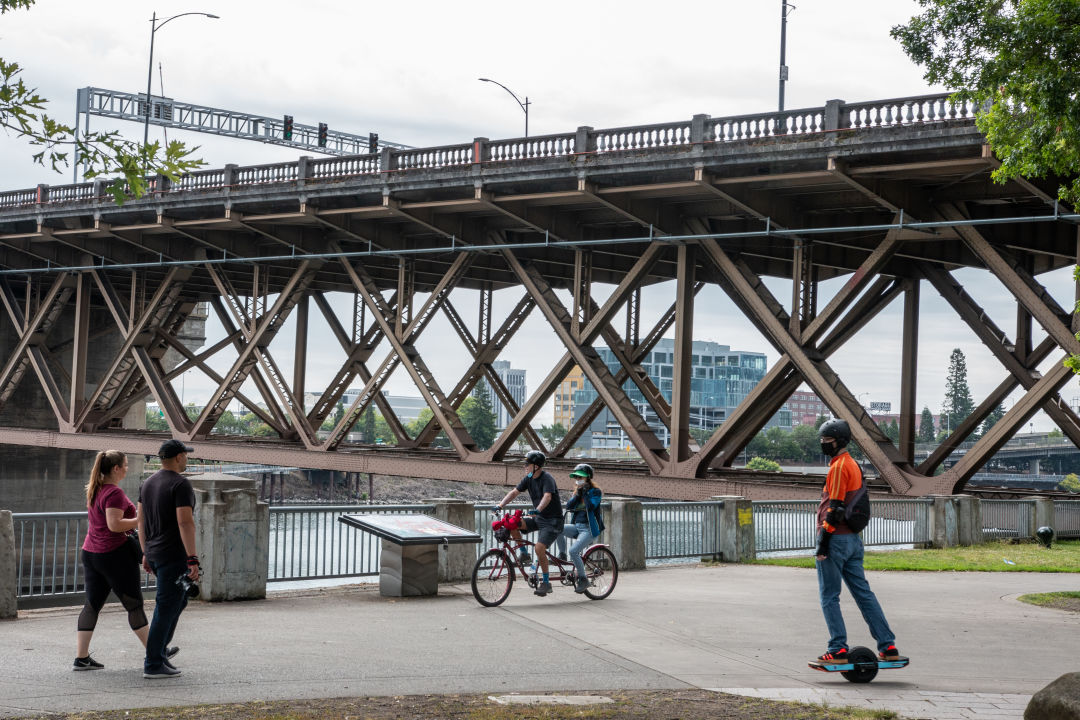
Some basic outdoor etiquette will get you far in the age of COVID-19.
Image: Gabriel Granillo
So much about the coronavirus is still a mystery. Is COVID-19 a disease of the respiratory tract, or is it more deadly, affecting multiple organ systems? How long exactly can it last on surfaces? With many questions still unanswered, there is one certainty: it’s here for the long haul. And we need to adjust accordingly.
Exercising daily is great way to support your immune system and mental health. And with most gyms and indoor recreation centers closed or operating in a limited capacity, we’re moving outdoors. Yet, questions remain about what the best practices are for running, hiking, biking, or visiting the park.
Here are a few things to know before you go outside:
TRAIL RUNNING/HIKING
This is not the time to set out for your favorite Gorge waterfall hike, sadly. For one thing, many of the trails there remain closed off after the 2017 Eagle Creek Fire. For another, many of the trails take off into narrow canyons, making it tough-to-impossible to stay distanced from other hikers.
Some basic etiquette will take you far.
Pick wide trails where it’s easy to step to the side to let other hikers pass, and look for those that are off the beaten path, so to speak. Bring a mask with you—one that you can easily pull up and down should you encounter other hikers is a good call—and remember the hiker going uphill has the right of way.
Make eye contact or check in with other hikers and if they seem like they are engaging in a game of trail chicken, just take the L and stand aside. Restrooms are probably going to be closed at the trailhead, so you might want to pack a shovel and some toilet paper. (Or, per the Washington Trails Association, pick up some reusable Kula Cloth for trail bathroom needs.)
Here are a few overlooked hikes to get you started.
Riverside Trail, Clackamas Foothills: Skip the terrifyingly crowded parking area at the Clackamas River Trail and drive about 15 miles farther on Highway 224, through Estacada and past the Ripplebrook Supply Store. Stop at any number of highway pullouts and find side paths down to this flat, mellow, never-too-crowded trail, which skirts the highway for a bit in the beginning, but soon drops down to secluded river beaches, perfect for a bracing dip. Bring water shoes, since the bottom is rocky, and keep a close eye on small kids in the current.
Herman Creek, Columbia River Gorge: During the week, it’s entirely possible to have this wide, shady trail all to yourself, and it’s only 45 minutes from Portland. The first half-mile or so is no great shakes, as it steadily switchbacks, and crosses an old logging road strung with power lines, but persevere until you get to the junction for the Herman Creek Bridge Trail—veer right, and climb down less than half a mile to a cool stream, perfect for soaking your feet and skipping stones. Another mile or so takes you onto the Pacific Crest Trail, where you can crane your neck for a glimpse of Pacific Crest Falls, maybe the last waterfalls Cheryl Strayed saw before coming off the PCT for good.
Cooper Mountain Nature Park: It’s kind of amazing this natural area, which is jointly managed by Metro and the Tualatin Hills Parks and Recreation District, is within Beaverton city limits. It feels worlds away from the suburban sprawl, with three and a half miles of trails and views out over the Chehalem Mountains. Arrive early in the morning to encounter fewer fellow hikers—but at all times park managers have set up a one-way trail system, so there’s less chance you’ll be dodging and bobbing to avoid oncoming hikers. Good for trail runners, too!
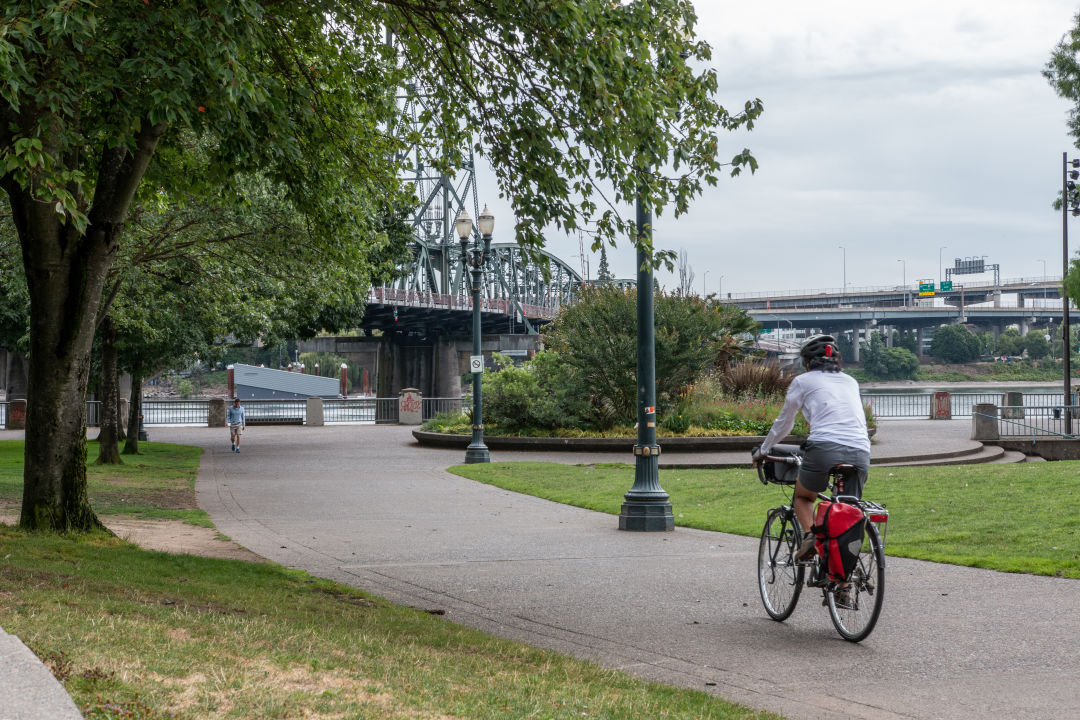
Going solo is currently the safest way to ride your bike.
Image: Gabriel Granillo
BIKING
Biking is one of the best ways to get daily exercise and explore the Rose City. But during a pandemic, it can be hard to know where to ride, what to wear, and what to do. We spoke with bike enthusiast and publisher and editor in chief of BikePortland.org Jonathan Maus about some biking best practices in the time of COVID-19. First things first:
Yes, it’s safe to ride your bike outside.
It’s even safer to ride your bike solo. Avoid riding in groups (sorry, no races), side by side, or downstream of another rider, and always try to maintain at least six feet of distance between you and other riders and/or pedestrians.
Yes, you should wear a mask.
There is no official guideline on this from the Multnomah County Health Department, however, best practice is to wear a mask. Not only can wearing a mask make biking, an already low-COVID-19-risk form of exercise, even safer, “it shows other people that I care about their health, and it sets a good example to everyone that we all need to take this pandemic seriously,” says Maus. As far as bike-specific masks, Maus says he hasn’t seen much, but he does recommend one that can be taken on and off without removing your helmet. Neck gaiters you can pull up and down, he says, are also an option. Don’t have a mask yet? Here are a few local places to buy from.
Remember: wearing a cloth face covering is not a substitute for physical distancing, washing your hands, or staying home when you feel sick.
Go for the path less traveled.
Most biking events and races in Portland have been canceled, postponed, or hosted in a different capacity due to the novel coronavirus, but that doesn’t mean people aren’t out and about. Try to avoid the Eastbank Esplanade, Waterfront Park, and Springwater from Portland to Sellwood, as those paths seem to drive the most traffic, especially on weekends. Maus recommends venturing out a bit: try Marine Drive as a route to Smith & Bybee Lakes in North Portland, or head through the neighborhoods to Mount Tabor or Rocky Butte. Other fun destinations are the bluffs along N Willamette Boulevard and Swan Island, he says.
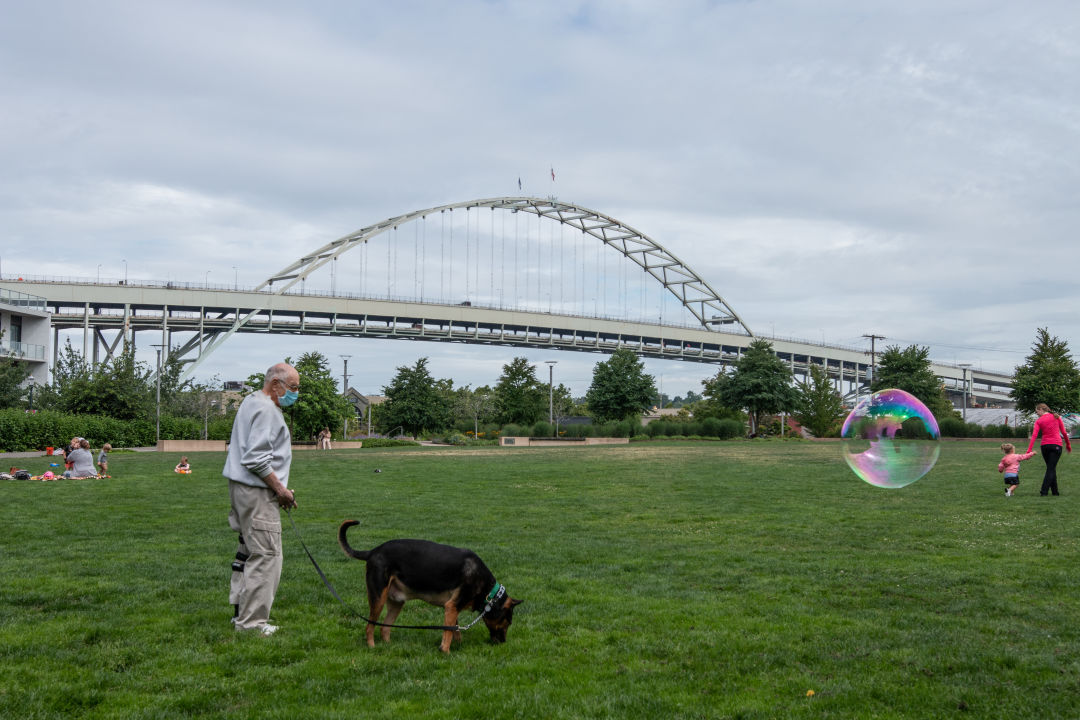
A stroll through your neighborhood park and a go on the monkey bars is a great way to get outside and get active, but be prepared to follow the guidelines established by Portland Parks & Recreation and public health officials.
Image: Gabriel Granillo
GENERAL PARK USAGE
Recess looks a little different this summer. A stroll through your neighborhood park is a great way to get outside and get active, but be prepared to follow the guidelines established by Portland Parks & Recreation and public health officials. Group gatherings cannot exceed 10 people at any park, and the six-feet-apart rule still applies. As of July 6, masks are legally required in indoor public spaces and strongly encouraged wherever six feet of physical distancing cannot be maintained, such as on a crowded sidewalk. Though two-hand touch football and doubles tennis are off limits, there are still plenty of ways to exercise safely outdoors. Should you embark on the park, here’s what you need to know.
What’s open/what’s closed right now?
Athletic/sports fields: Open with restrictions. Small group fitness (under 10 people) are allowed, but contact sports are prohibited. Some gyms like PDXStrength, Blue House, and The People’s Yoga and are offering outdoor fitness classes. The Bhakti Yoga Movement Center offers backyard yoga classes that raise funds for BIPOC nonprofits.
Basketball courts: Closed.
Disc Golf: Open. Stay six feet apart, no groups above 10, and no disc sharing.
Golf courses: Open. Maintain six feet of distance between players.
Outdoor tennis courts: Open, but singles only. Each player must bring their own marked tennis balls.
Playgrounds and play areas: Closed until the governor directs otherwise.
Pickup and organized sports games: Prohibited.
Picnic sites: Open. Stay six feet apart, and no groups above 10.
Pools: Closed through September 2020 (date subject to change).
Restrooms: Open and cleaned once per day.
Skate parks: Open. Stay six feet apart, and no groups above 10.
Look for wide parks with lots of space.
Just like bike trails, some of Portland’s parks tend to get crowded on hot summer weekends. Swap the usual trip to Mount Tabor for something with less foot traffic, like Clatsop Butte or Fernhill Park. Wide open spaces are your friend at Kelley Point Park where the Columbia and Willamette river collide together at the park tip. In southwest opt for Gabriel Park where 90 acres of greenery leaves ample room for physical distancing.

